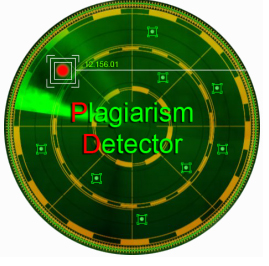THE PORTRAYAL OF WOMEN’S AMBITIONS THROUGH THE CHARACTER OF NINA SAYERS IN BLACK SWAN
Abstract
Ambition is the energy expressed in active behaviour towards a goal or aspiration, carried out with persistence and a common struggle in the pursuit of success, achievement, and completion. The existence of different societal perspectives related to men's and women's ambitions raises negative stigmas that harm women. Therefore, film is present as an entertainment medium, and as a channel to convey messages to portray social reality, and to change the perspective. One of the films that depict women's ambitions is "Black Swan" (2010) with the background of the main character who wants to achieve success in the ballet industry in a performance called "Swan Lake".
This film highlights the struggles and sacrifices of Nina Sayers in her effort to get the main dancer position, with the pressures and obstacles she faced to reach the pinnacle of success. This study aims to determine the portrayal of women's ambitions through the character of Nina Sayers in "Black Swan". This research uses a qualitative approach, with semiotic analysis methods according to Christian Metz, through scenes that are categorized as depicting striving ambitions, perfectionist ambitions, and aggressive ambitions of Nina Sayers in "Black Swan".
"Black Swan" gives a complex picture of women trying to achieve success in the competitive ballet industry. The portrayal of strong women's ambition and perseverance to achieve success in this film provides a point of view rarely explored in the film's narrative. Nina Sayers’ perfectionist personality shown most strongly in the film, "Black Swan" exemplifies that ambition and hard work know no gender boundaries. The film shows that women can also strive for success in their careers and are ready to make sacrifices to achieve those goals, just as men are.
Keywords: Christian Metz, film, film semiology, the large syntagmatic category, women’s ambitionFull Text:
PDFReferences
Ahmadgoli, K., & Yazdanjoo, M. (2020). Multimodal Representation of Social Discourses in Asghar's Farhadi's A Seperation: A Social Semiotic Study. Social Semiotics, 699-714.
Ali, M. M. (2018). Analisis Gender Film Salah Bodi Melalui Semiotika Christian Metz. Gelar Jurnal Seni Budaya, 59-76.
Ariasparrow. (2021, September 22). Review Black Swan, Ambisi Balerina Yang Berbahaya. Retrieved from Cinecrib: https://cinecrib.com/2021/09/22/review-black-swan/
Benshoff, H. M., & Griffin, S. (2021). America on Film: Representing Race, Class, Gender, and Sexuality at the Movies, 3rd Edition. West Sussex: Wiley Blackwell.
Cangara, H. (2015). Pengantar Ilmu Komunikasi. Jakarta: PT RajaGrafindo.
Csinema. (2020). Csinema. Retrieved from Csinema: http://csinema.com/shot-scene-dan-sequence/
Dado, P. (2020). Ekspresi Ambisi Dalam Novel a Stranger in the Mirror Karya Sidney Sheldon. Jurnal Universitas Samratulangi, 1-20.
Danesi, M. (2010). Pengantar Memahami Semiotika Media. Yogyakarta: Jalasutra.
Deuze, M. (2021). On the ‘grand narrative’ of media and mass communication theory and research: a review. Profesional de la información, 1-14.
Devano, K. A., Kustanto, L., & Maemunah, S. (2022). Representasi Reintroduksi Satwa dalam Film Postcards From The Zoo (Analisis Semiotika Christian Metz). Sense: Journal of Film and Television Studies, 71-78.
Fox, R. L., & Lawless, J. L. (2010). If Only The If Only They'd Ask: Gender d Ask: Gender, Recruitment, and P , Recruitment, and Political Ambition olitical Ambition . The Journal of Politics, 310-326.
Iswandi, S. (2016). Ilmu Komunikasi Tradisi, Perspektif dan Teori. Yogyakarta: Calpulis.
Joya, B. (2017, April 5). What ambition gap? Women as ambitious as men unless companies block them: study. Retrieved from Reuters: https://www.reuters.com/article/us-women-ambition-study-%20idUSKBN1772AB
Judge, T. A., & Kammeyer-Mueller, J. D. (2012). On the Value of Aiming High: The Causes and Consequences of Ambition. Journal of Applied Psychology, 758-775.
Kirnandita, P. (2020, November 24). Woman Lead by Magdalene. Retrieved from Woman Lead by Magdalene: https://womenlead.magdalene.co/2020/11/24/stigma-negatif-terhadap- perempuan-ambisius-hambat-karier/
LBS, N., Muchtar, M., & Ridha, Z. (2023). Psikoanalisis Sigmund Freud Dalam Penerapan Akhlak Siswa Di Kelas VII MTsM 1 Langkat. Cybernetics: Journal Educational Research and Social Studies, 206-217.
Makaryk, I. R. (1993). Encyclopedia of Contomporary Literary Theory, Approaches, Scholars, Terms. Toronto: University of Toronto Press.
Marcus, B. (2016, August 29). Forbes. Retrieved from Forbes: https://www.forbes.com/sites/bonniemarcus/2016/08/29/the-top-5- sacrifices-women-make-for-their-career/?sh=2a13e7ab7d75
Mcquail, D. (2020). Mcquail's Media & Mass Communication Theory, Seventh Edition. Los Angeles: SAGE.
Metz, C. (1991). Film Language A Semiotics of the Cinema. Chicago: The University of Chicago Press.
Mulyana, D. (2015). Ilmu Komunikasi Suatu Pengantar. Bandung: Remaja Rosdakarya.
Piscopo, J. M., & Kenny, M. (2020). Rethinking the ambition gap: gender and candidate emergence in comparative perspective. European Journal of Politics and Gender, 3-10.
Pratikto, R. (2007). Berbagai Aspek Ilmu Komunikasi. Bandung: Remadja Karya.
Saragih, M. Y. (2020). Journalistic Mass Media Management. SIASAT Journal of Social, Cultural and Political Studies, 141-158.
Severin, W. J., & Tankard, J. W. (2009). Teori Komunikasi Sejarah, Metode, dan Terapam di Dalam Media Masa, Edisi Kelima. Jakarta: Kencana Prenada.
Simbiosa, E. A., Komala, L., & Karlinah, S. (2012). Komunikasi Massa Suatu Pengantar. Bandung: Simbiosa Rekatama Media.
Sobur, A. (2013). Filsafat Komunikasi Tradisi dan Metode Fenomenologi. Bandung: Remaja Rosdakarya.
Subiakto, H., & Ida, R. (2012). Komunikasi Politik, Media, & Demokrasi. Jakarta: Kencana Prenada Media Group.
Suhandang, K. (2010). Pengantar Jurnalistik. Bandung: Nuansa.
Susanto, A. S. (1982). Komunikasi Massa 3. Bandung: Binacipta.
Tatenhove, F. C. (1984). Ambition: Friend or Enemy? Philadelphia: The West Minister Press.
Thao, N. V., & Herman. (2020). An Analysis of Deixis to Song Lyrics “My Heart Will Go on” by Celine Dion. Communication and Linguistics Studies, 23-26.
Uzuegbunam, C. E., & Ononiwu, C. R. (2018). Highlighting racial demonization in 3D animated films and its implications: A semiotic analysis of Frankenweenie. Romanian Journal of Communication and Public Relations, 5-20.
Vivian, J. (2008). Teori Komunikasi Massa. Jakarta: Kencana.
West, R., & Turner, L. H. (2010). Introducing Communication Theory. New York: Frank Mortimer.
Wiguna, K. H. (2021, February 1). Kementrian Keuangan Republik Indonesia. Retrieved from Kementrian Keuangan Republik Indonesia: https://www.djkn.kemenkeu.go.id/kpknl-tarakan/baca-artikel/13676/Film- Bukan-Hanya-Sekedar- Hiburan.html#:~:text=Film%20adalah%20salah%20satu%20media,cara% 20yang%20menghibur%20dan%20menyenangkan.
Winarni. (2003). Komunikasi Massa Suatu Pengantar. Malang: UMM Press.
DOI: https://doi.org/10.33365/llj.v4i2.4721
Refbacks
- There are currently no refbacks.
Linguistics and Literature Journal
Published by Universitas Teknokrat Indonesia
Organized by Faculty of Arts and Education
Jl. Zainal Abidin Pagaralam, No.9-11, Labuhanratu, Bandarlampung, Indonesia
Telepon : 0721 70 20 22
W : http://jim.teknokrat.ac.id/index.php/linguistics_and_literature/index










